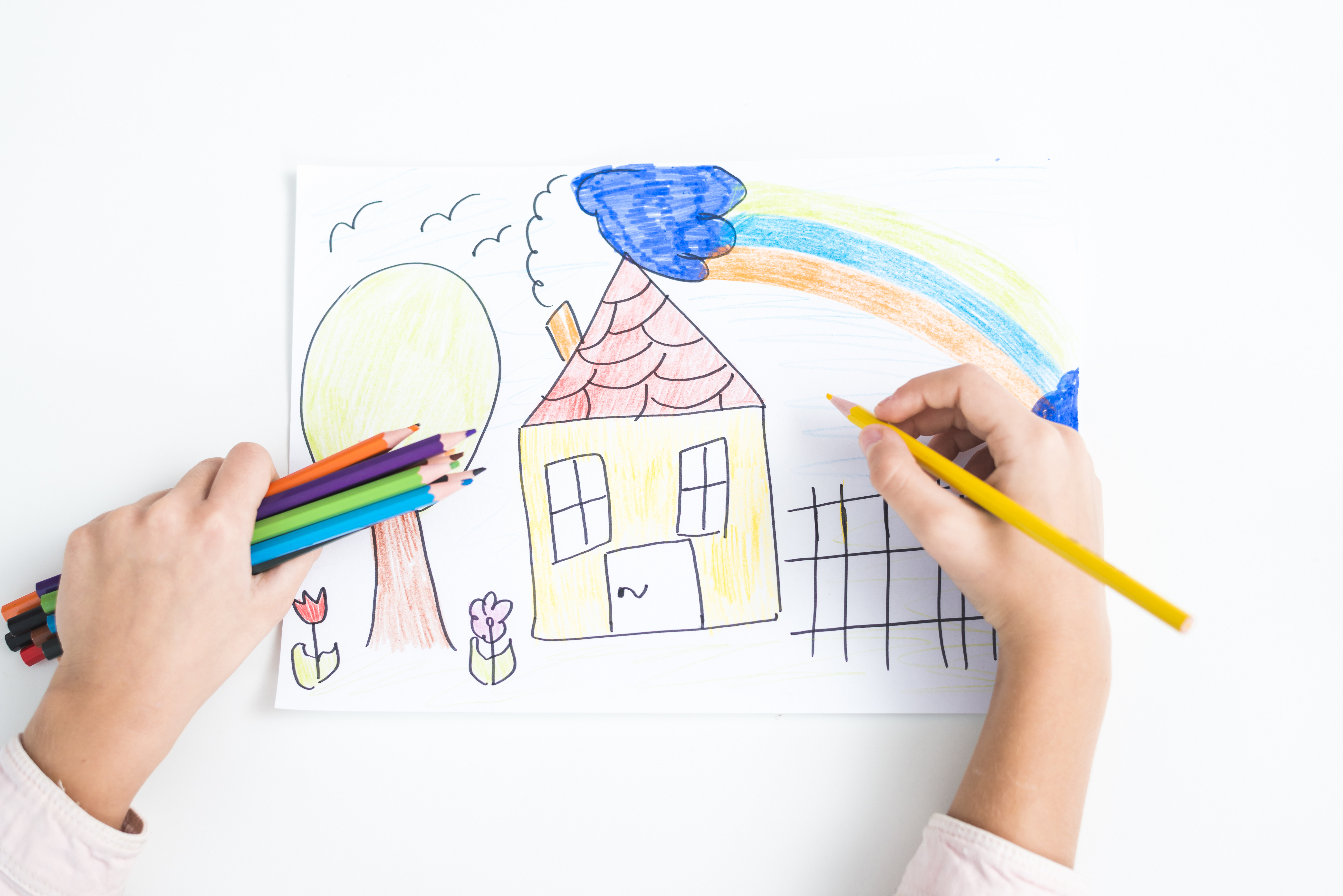If we had to keep all the drawings, craft works and hobby projects done by our children, it would be a clutter of humungous proportions. Every parent’s foreboding is how to dispose them without raising any red flags. Each creation is the child’s favourite, however ‘disposable’ it might have become!
Now if we turn around the board and look at it from the child’s point of view, what they want is:
- To take pride in their work and for the parent to treasure it as well
- To not let go of their work for as long as they can
However, to do this, do we need to keep each and every item? In fact, when things pile up on study tables and in cupboards, they don’t spark the same joy as when they were first made.
As much as that is true, it is important to encourage children to spend time with their creative and cognitive pursuits. When children are engrossed in the process of creating, their mind is constantly working. Their fine motor skills and coordination skills are improving. It boosts their creativity, confidence and problem-solving skills.
It is the best distraction from screen time.

My daughter is a DIY enthusiast. Here is a tooth-brush holder with a vacuum sticker at the back. It’s a great effort and she was thrilled to put it on the bathroom mirror, having made an innovative product. But, I knew inside that the vacuum will not stand the daily tug of taking the brush out and putting it back. So, of course, I clicked a picture while it lasted!
But how do you make these creations a lasting memory, which you can revisit at the snap of a finger?
I found an apt and simple solution in Instagram. Now keepsakes are online and off desks. Here are some tips on using Instagram for this purpose:

Online journal: Instagram can be used like a scrapbook for all the creative work that your child does. You could write some memorable things about that creation in your post, which you will cherish when you look back.
Parent Handle: It is advisable to create an Instagram handle that you use and moderate. Children should not be allowed to use social media for two reasons – stranger danger and an inevitable craving for ‘likes’. I have been firm on this point that they can have their own handle once they are 18. The Instagram journal is only for them to cherish these memories. You will see that once children understand the purpose, they have no qualms about your stand.
Hashtag: If you have more than one child, or if your child has more than one kind of creative pursuit, you can create hashtags that allow you to retrieve a particular collection from your posts.
You can port the images to another app or download to other devices in future. Apart from the obvious benefit of having a chronicle of your child’s explorations, there are a few hidden upsides:

Encouragement: Children feel valued and delighted to see the growing portfolio of their work
Evolution: As they look back at their work, they reflect on what could’ve been better and how they have improved over time
Raising the bar: Not all work belongs to Instagram – it might take time to set that expectation. Since it doesn’t take much effort to click and upload every creation, do it anyways if the child insists. With time, they will learn to review their work and agree to your feedback of whether to upload or not. I look at things like the difficulty of the task, the uniqueness, the technique, the patience needed and the time spent on it. We decide whether the work is “Instagram-worthy”
Inspiration: You can follow people pursuing similar interests from across the globe and let your child draw inspiration from their work. It’s a great way to expand the horizon of possibilities
No Clutter! It achieves what I started the post with. When children realize that their work is being recorded (and that too visually), they are not so hung up about holding on to everything that they create. At least not for eternity.
A word of caution though. Using your child’s work for ‘brag-value’ with your friends and family may be counter-productive to this exercise. This will create an unnecessary pressure of expectations in your child. Rather than enjoying the process, the child may feel weighed down or anxious. Instead of discussing likes and comments, tell children how their portfolio has evolved and how the efforts they are putting in has benefitted them.
Meanwhile, enjoy the journey as your child blossoms into a self-assured and happy person, minus the clutter.
Originally published on LinkedIn.


